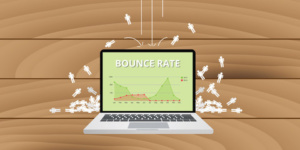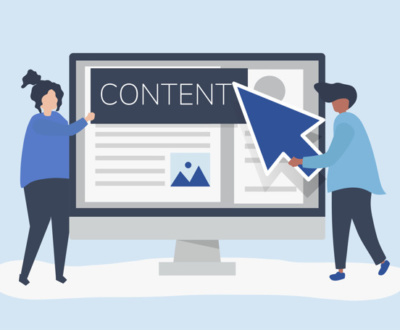 Bounce rates indicate the percentage of visitors that land on your website but takes an exit from it without taking the desired action.
Bounce rates indicate the percentage of visitors that land on your website but takes an exit from it without taking the desired action.
Bounce rates above 70% are devastating for the e-commerce stores, and if your website has a bounce rate between 55-70%, the situation is highly alarming for you.
The performance of e-commerce websites highly depends on a visitor’s browsing experience. A steep increase in bounce rates leads to a formidable conversion rate of your site. The maximum amount of bounces is reported on product pages. This is the place where a visitor lands and decides whether to browse more or leave the website straight away.
Hence, there is an utmost necessity to deal with high bounce rates. Here are seven great tips to reduce bounce rates:
Place your call-to-action perfectly
Since you need to optimize your website for your users, you should have a clear understanding of what you want to show to them. Try to insert call-to-actions that are clear, crisp and honest. Online users have the choice of leaving your website in the first few seconds if they dislike your content. Your call-to-action should be prominent. For example: if you are selling products, you can include CTAs such as ‘shop now’, ‘order now’ ‘add-to-cart’. If you want customers to subscribe to your emails, you can include call-to-actions like ‘sign up’, ‘subscribe’, ‘join our mailing list’.
Call to action encourages an immediate response from your visitors. Just by a simple glance on your call-to-action area, your customer might take a decision. Incorporating compelling call-to-action in your product pages lets your visitors know what you are selling.
Improve the browsing speed
To enrich the experience of your site visitors, you need to optimize the content of your website such that it starts loading in microseconds. Online visitors are impatient and are unlikely to wait longer for your webpage to open. There are many optimization tools available to improve the processing speed of your web pages. Find the perfect one that completely aligns with your need for decreasing the loading time of your web-pages. You might have to modify the scripts if necessary. Sometimes the inclusion of complicated codes in the framework hampers the loading speed of your website.
A/B testing
If you have successfully eliminated the drawbacks that were leading to higher bounce rates, you can consider A/B testing as your next step. A/B testing or split allows you to assess two versions of a web page to see which one performs better. You compare two web pages by showing the two variants (let’s call them A and B) to similar visitors at the same time. This comparison helps you in testing different strategies or call to action and then compare the results. You can juggle with varying approaches of content, target audience and different keywords to find which version of your website is working better.
Keep your audience hooked
Your site visitors are most likely to purchase what they are viewing on your website. If there are multiple product videos or pictures, more audience will be drawn towards it. A compelling visual content loaded with product descriptions, attractive slides, and carousels are highly effective in attracting more and more customers. High-quality videos and pictures can be used in backgrounds, as incline images to your call-to-action, as “how to use” videos and so on. Start highlighting your offers and discounts in visually appealing photos with light backgrounds.
Use tracking tools
There might be cases when your site visitors have left your website without engaging in a single action. You might wonder why they have closed your web-page and abruptly taken the exit from your website in spite of the great content you are offering them? The reason might be personal. In such cases, you use tracking tools for tracking the exit of your visitors. The advanced methodologies help you track when a user is about to leave. Instead of letting them go, you can display targeted messages in front of them. You can give them the option to save their product for the future, or you can showcase your best offers in front of them. It helps your visitors to connect with your brand and also allows them to explore further on your website. As the visitors spend more time on your website, there are chances that they might take a specific action on it.
Improved navigation experience
Most of the leading websites of the modern era prefer sleek designs and single-click navigation interface that allows the users to find whatever they want. Users are most likely to ditch a complex navigation interface since such a platform is difficult to navigate. Users mostly prefer a simple and uncluttered interface. The categories and subcategories should be organized perfectly, enabling the users to find the product they want. An enriching breadcrumb experience for the users is also mandatory.
Talk to customers
Popular e-commerce websites contain testimonials section that mainly highlights the quotes of customers regarding your brand. This section displays the reviews and success stories of your customers. Approach your customers for a review after they have bought a product from your website or used your service. You can convert textual product reviews into illustrations that showcase the identity of your customers or clients who have previously used your service. This is one way of building an effective connection with your audience. Your visitors would love to go through the stories, and they will feel more interested in buying your product or taking your service. You can also install live chat tools or chatbots on your website that enable the visitors to communicate with your brand when they are browsing through your content. Create an active customer support section that would inform your users of everything related to your brand.








